Is this Dark Souls?
From Software's sequel adds to the original's formula, but questions remain about how much it takes away.
On the steps outside an east London church there's a smiling PR checking names off a list. Next to her, in the early twilight shadow of a late January evening, is a hired hand dressed head to toe in clunking steel armour. He guides us down the steps and through the courtyard, flaming torch held out ahead of us, as we all exchange an awkward smile with the PR on our way into the catacombs. Inside, Peter Serafinowicz - the gravelled voice of Darth Maul, and Spaced's Duane Benzie - tells us how he's played the original Dark Souls for some 1800 hours, how excited he is to be playing the part of mild-mannered Pate in its sequel, and how proud he is to be providing the grunts and groans of the suffering player in From Software's game.
We're a long way from Lordran, and even further from the cold, surprising enigma of the game that started it all. 2008's Demon's Souls - itself a continuation of From's miserablist fantasy King's Field series - was that rare thing, an unheralded, unannounced mid-budget console game whose reputation was kindled through word of mouth. Its spiritual successor Dark Souls was a grander, more intricate production, yet its enigma remained intact, the dignity with which it unravelled cementing the game's status as one of the greats of its generation.

Well over two years later, Dark Souls has become a phenomenon. Its publisher, Bandai Namco, is acutely aware of this, even if its treatment of Dark Souls 2 sometimes suggests its interpretation of the series' appeal doesn't always chime with the fans'. Celebrity-fronted events, pop-up cafes and tie-in comic books penned by American authors feel several worlds away from these masterpieces, famously fuelled by their own self-contained sense of mystery.
It's another layer of doubt to be added to those that have wrapped around Dark Souls 2 ever since the game's reveal. Hidetaka Miyazaki, the visionary behind Demon's and Dark Souls, has stepped aside, and the new director Tomohiro Shibuya's comments about a more understandable, straightforward game rung the wrong kinds of bells. There have been more soothing sounds from co-director Yui Tanimura, yet still a thick fog of doubt hangs over Dark Souls 2's new setting of Drangleic.
So, sitting down with the final build of Dark Souls 2 a mere matter of weeks before its release, the biggest adversaries aren't the hulking demons or well-concealed hollow soldiers, but the anticipation, expectation and nervous trepidation that inevitably surround the follow-up to one of the very best games of all time. You approach Dark Souls 2 as you approach the series' notoriously hostile worlds: shield up, eyes open and often fearing the absolute worst.
It doesn't take long for the old rhythm to set in - about 40 seconds, to be precise. After a long, lavish pre-rendered intro, you're cast before a dark field where ratty creatures furrow through grass that dances in pale light. Adorned with nothing but a tattered red robe, I start an ill-advised fist fight which summons a swarm of the beasts, sending me crumpling to the ground within seconds. An embarrassed silence, and then the ping of Dark Souls 2's first trophy, awarded upon your first death: 'This is Dark Souls'. As if there was ever any doubt.
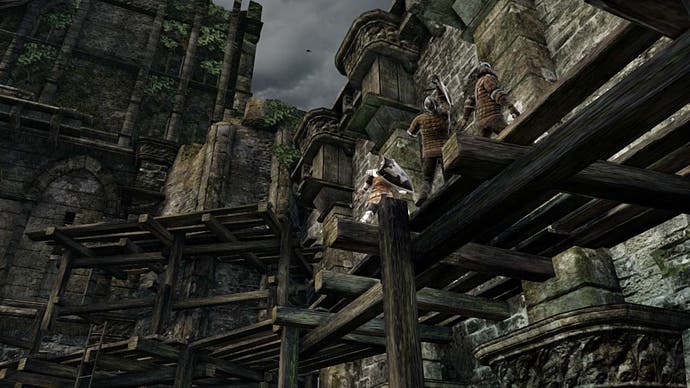
The next hour of exploration, thick with danger, intrigue and flashes of pure confusion, certainly backs that up. This is From Software's series as brutal and as brilliant as you remember it, where half a second's inattention can wipe out half an hour's progress. It's not easier, and it's not necessarily harder. It's most definitely different, though, and the points of comparison and departure will be the focus of much debate, and much consternation, well after Dark Souls 2's release.
Dark Souls 2's tutorial is a little more heavy-handed than its predecessors', a less organic primer for the difficulties to come in which tombstones tell you of the base mechanics, as well as introducing some of the newer ones. The most significant addition to your basic move-set is something as simple as the jump being bound to a different button, meaning that running and leaping are no longer part of the same sticky motion. Attacking an enemy from the rear, meanwhile, is now a more ornate process, and one that's less tricky to pull off. There are other additions, introduced through your own experiments and failures later on - you're more prone to a stagger state when your stamina's low, dual-wielding weapons is a new option and the lock-on is now more far-sighted, an amendment that's equal parts frustrating and helpful.
It's a measure of the perfect balance of design found in the original Dark Souls that every new feature in the sequel takes away much as it adds, and some of the shifts are more controversial than others. Fast travel between bonfires adds convenience, but at the same time it doesn't insist on the same intimacy with the world that Dark Souls embraced so well. Voice chat is now implemented, though it's opt-in, and the process of finding friends to fight alongside has been smoothed by a system whereby you can align yourself to certain gods within the game. Worship the same deity as your friends, and it's more likely that you'll be summoned side-by-side. A diminishing of the cold-faced distance traditionally kept between players in the Souls series, or a necessary concession to modern audiences? It's all a matter of perspective.
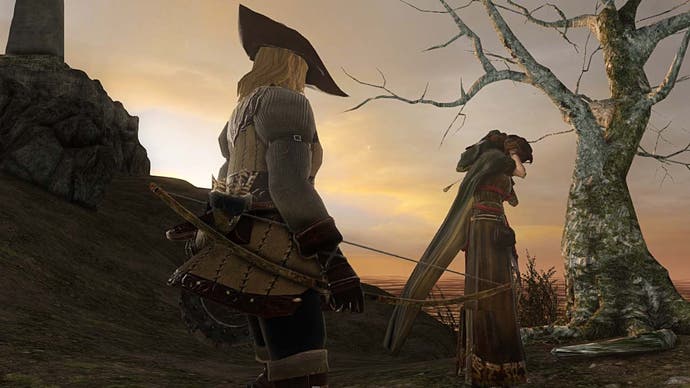
As are introductions such as the Soul Vessel, an item you can take to a certain location somewhere within the world to reset your parameters and re-spec your class. The dead ends of progression are no more, but is the electric sense of being in a world where wrong decisions are duly punished undermined? The health system is rejigged once more, with Estus flasks now joined by life gems that are slow to replenish your lifebar but plentiful in supply. As you die again and again, becoming more and more hollow, your lifebar slims piece by piece, a process mirrored in the appearance of the player, their hair thinning further and their skin rotting more upon each new death. A muddling of Dark's stripped-back approach, or a return to the nuance of Demon's herbs? Right now there's no definite answer either way.
Dark Souls 2's new setting of Drangleic will likely split opinion, too. Set up by some atypically dense exposition by way of a post-tutorial cut-scene, it's a brighter, slightly less bleak world than its predecessor. Perhaps it's a result of prejudice built up through exploring the depths of Lordran, but it's a location that, in the opening hour at least, feels less dense with detail, and less steeped with a mournful sense of foreboding. Majula, a central hub that acts as an analogue of Dark Souls' Firelink Shrine, is a village set upon golden shores where a huddle of traders offer you their wares. Just beyond, The Forest of Fallen Giants - a tangle of felled trees and destroyed stonework interspersed with sun-kissed courtyards - is a less involving backdrop than the Undead Burg, though that's not to say it's a lesser creation.
Most importantly, away from the subtle shift of systems and a brightening of the aesthetic, Dark Souls 2 has retained the ability to surprise and to challenge. There are secrets to be found around dark corners - one long corridor squirrelled away hosts a fire-belching frog who guards a fire-spitting sword - near-impossible feats, and impeccably realised enemies to fight.
An early boss is like an S&M mascot cast in wattle and daub, while stalking the opening area are colossal rhino-like beasts, placed to tease in the brave and intimidate the starting player. I run straight past, but a couple of screens away one of our number decides to get involved in the insurmountable fight, taking the creature on with nothing more than a dagger and a high heart. Within minutes a crowd assembles, sharing strategies and offering encouragement over a long, clumsy duel to the death, and that rare sense of community that From Software's peerless series offers rises up. This is a different game, one where some edges have been blunted while others have been sharpened to a prickly shine - but it's one that's indubitably, proudly and defiantly Dark Souls.
Yep, it certainly is Dark Souls all over again. If you've hit a massive, sword-wielding brick wall, we've got guides for some of the toughest Dark Souls 2 boss fights.



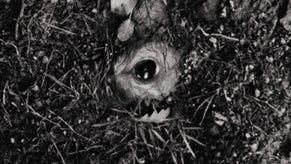

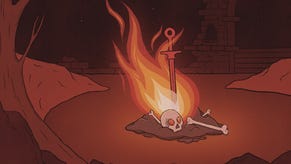
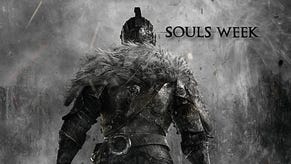
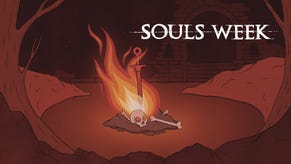




.png?width=291&height=164&fit=crop&quality=80&format=jpg&auto=webp)



